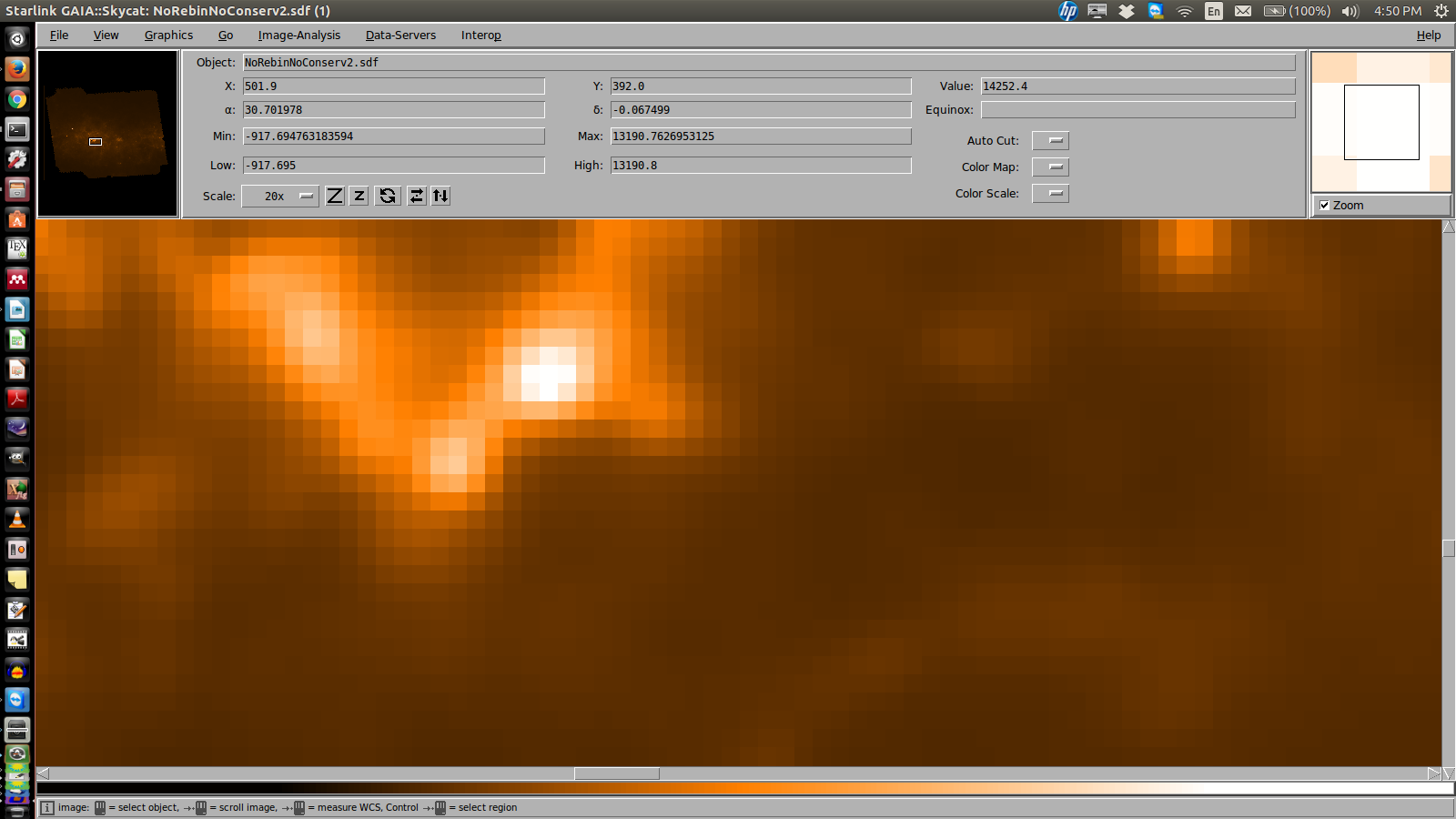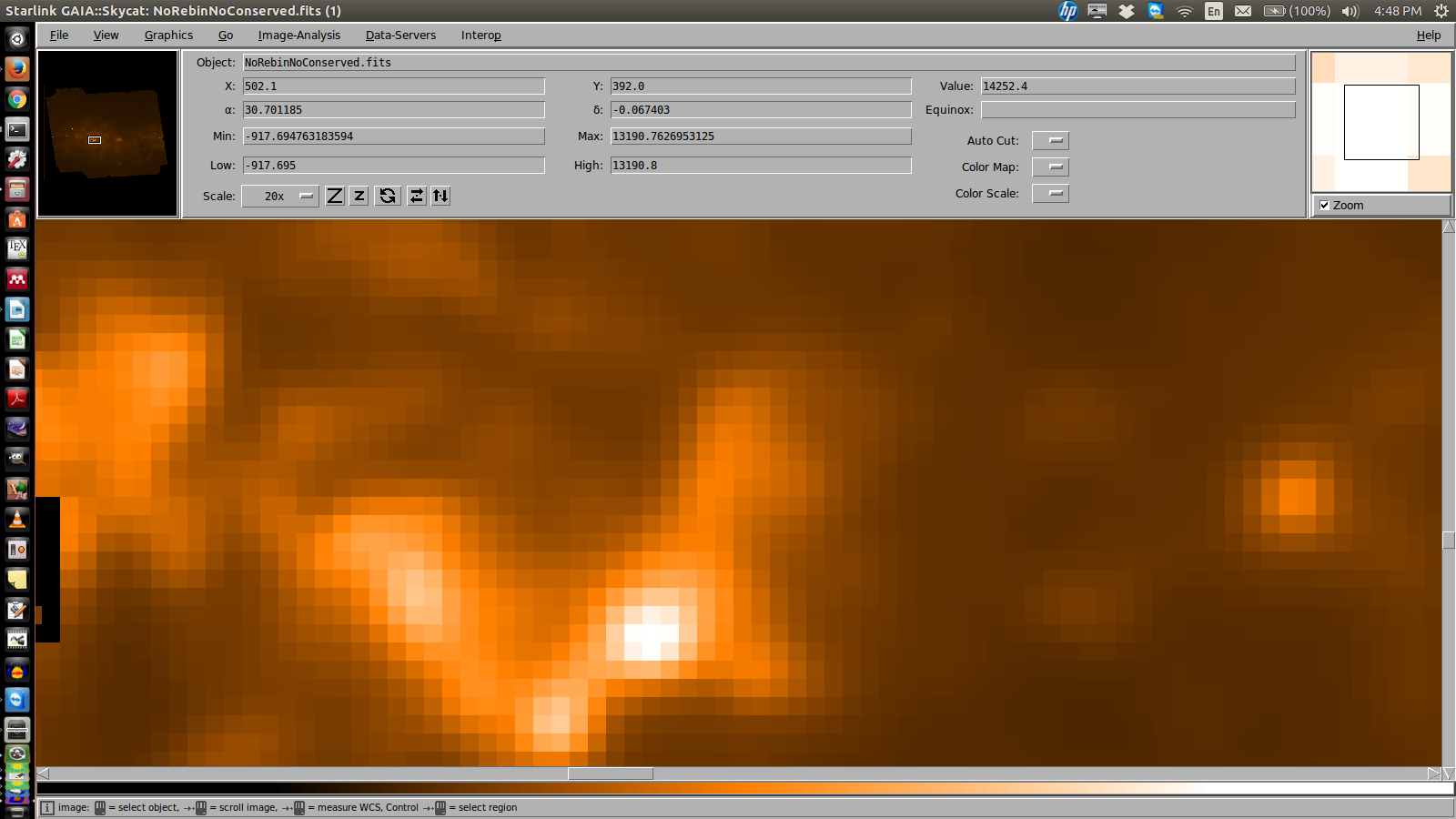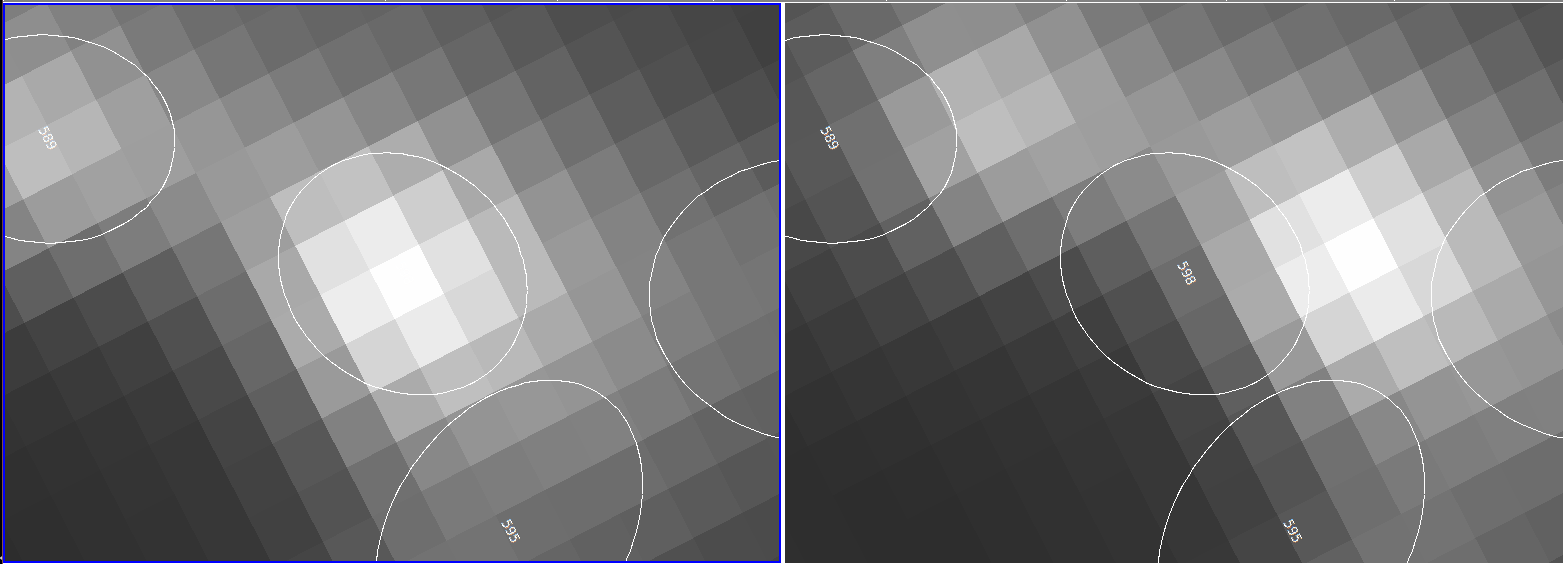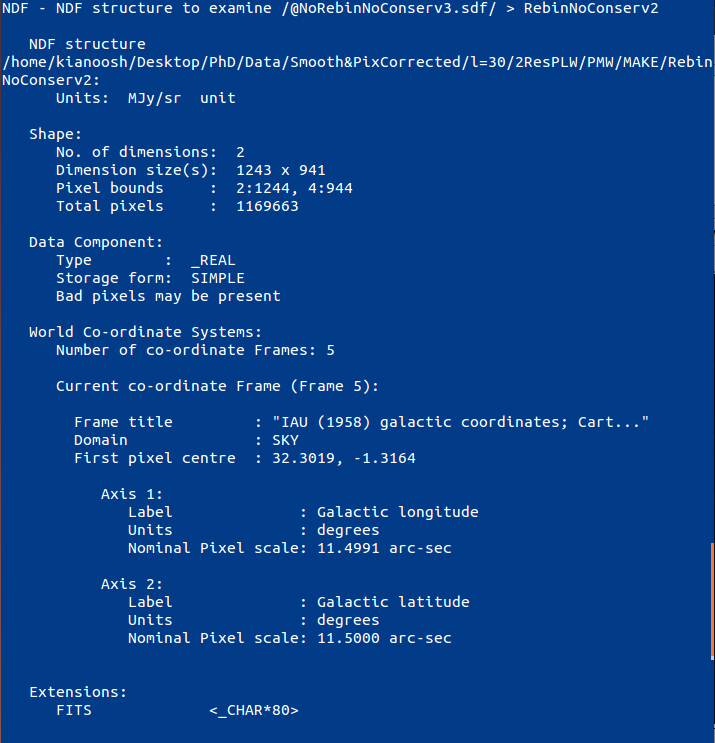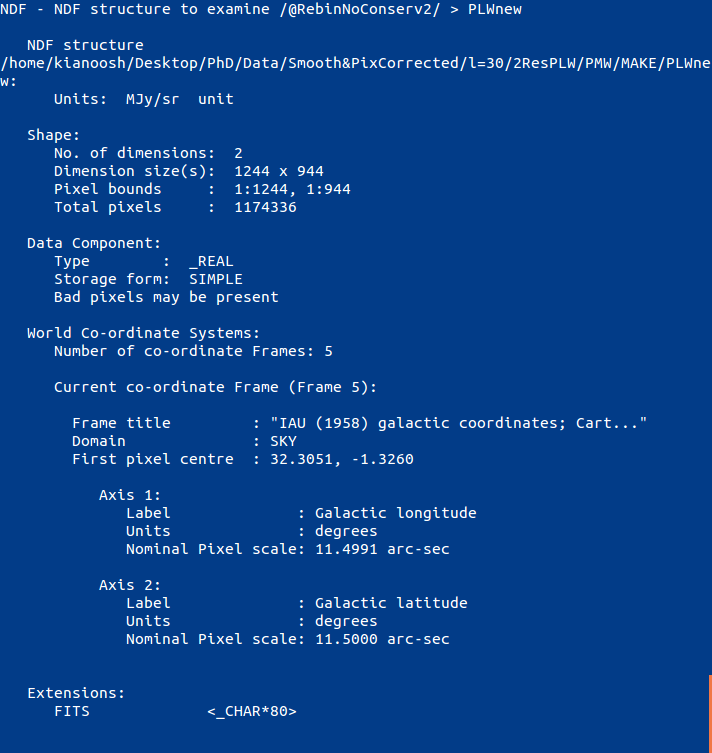On Tue, Sep 27, 2016 at 3:56 PM, Kianoosh Tahani <[log in to unmask]> wrote:
Thanks, that helped to open up the files via gaia. However, the wcs does not yet match: In the two following images I have my cursor at the same pixel and they have different values in older and newer maps reproduced:Cheers,Kianoosh--On Tue, Sep 27, 2016 at 4:42 PM, Tim Jenness <[log in to unmask]> wrote:Can you try GAIA without an "&" in your path? The ampersand can really mess things up if there is a quoting problem in the shell.ndftrace: The first pixel will be different if the images are different sizes.On Tue, Sep 27, 2016 at 3:27 PM, Kianoosh Tahani <[log in to unmask]> wrote:Dear Tim,I did not upgrade the package. (However I tried using 2015A2 and 2015B packages). I update the Ubuntu (sudo apt-get update command), therefore, it made me suspicious that one of the libraries that STARLINK may use might have been updated as well. Sorry for lack of explanations.I am quite positive that the WCS has been changed as well: Here is the regions identified on my old data (left) and also loaded on my new data (right). (both data has been reproduced via exactly the same procedure as explained in my previous email, however, one is before updating my computer and one was after).However, these are opened via ds9 package and I do receive the following error while opening the files with gaia: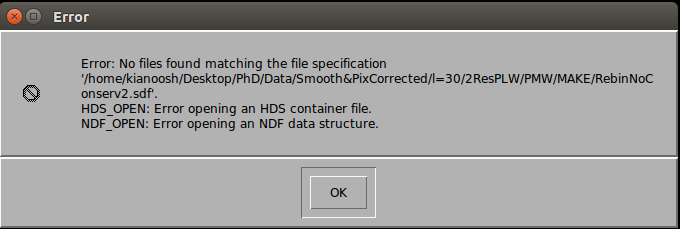
Also regarding this question of yours:
"For the NDF versions, does ndftrace suggest that the WCS of the pixel origins match?"The first pixel centre does not match:The image below is from the data the pixel size been changed:The image below represent the reference data in which the pixel size has been inherited from:Thanks a lot in advance,Cheers,Kianoosh--On Tue, Sep 27, 2016 at 4:02 PM, Tim Jenness <[log in to unmask]> wrote:What version of the software did you upgrade from and which version are you using now?Are you sure that the WCS is wrong? Is it possible that you have ended up with more padding around the image so that the pixel counts are different but the WCS itself is still compatible? If you load the FITS image into GAIA and zoom in so that you can see individual pixels, does it report the same WCS for the same structure?For the NDF versions, does ndftrace suggest that the WCS of the pixel origins match?--Tim JennessOn Tue, Sep 27, 2016 at 2:47 PM, Kianoosh Tahani <[log in to unmask]> wrote:--Dear Starlink team,
I am trying to regrid my data onto larger pixel by using the wcsalign command. I am changing the pixel size of Herschel data at
lower wavelengths (i.e. 70 (blue), 160(red), 250(psw), 350(pmw) um ($\mu m$) ) to the pixel size of the data at 500(plw) um (11.5'' pixel size). Therefore, I use the 500(plw) um data as the reference:% wcsalign in=(e.g.)blue out=regridmap lbnd=! ubnd=! ref=plw rebin conserve=f Then I change the regridmap.sdf file to a fits file via ndf2fits command.This procedure used to work fine, however, now (possibly) after updating the software of my computer the NAXIS1 and NAXIS2 of the FITS HEADER of the reference file (plw.fits or 500 um data) no longer matches with the FITS HEADER of the "regridmap.fits" produced. (original (plw) Naxis1=1244 & NAXIS2=944 while the produced file is NAXIS1=1243 & NAXIS2=941).This small change in the NAXIS is causing an error on the real position of the objects/clumps I am studying on my data. Your help on solving and tackling the issue is greatly appreciated.Cheers,
Kianoosh TahaniPhD candidate,Department of Physics & AstronomyUniversity of CalgaryCheers,
KianooshCheers,
Kianoosh
